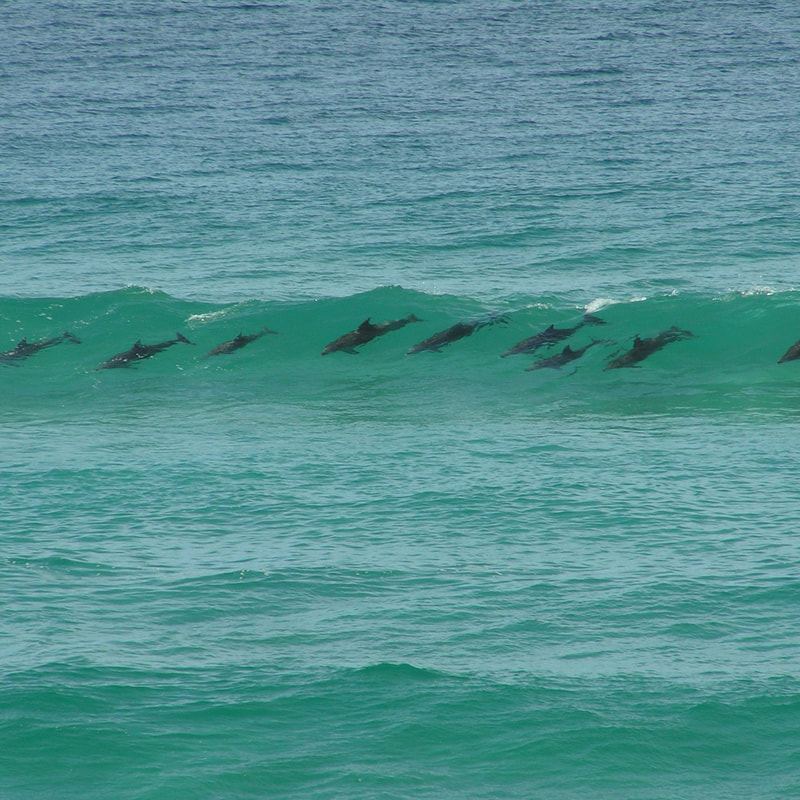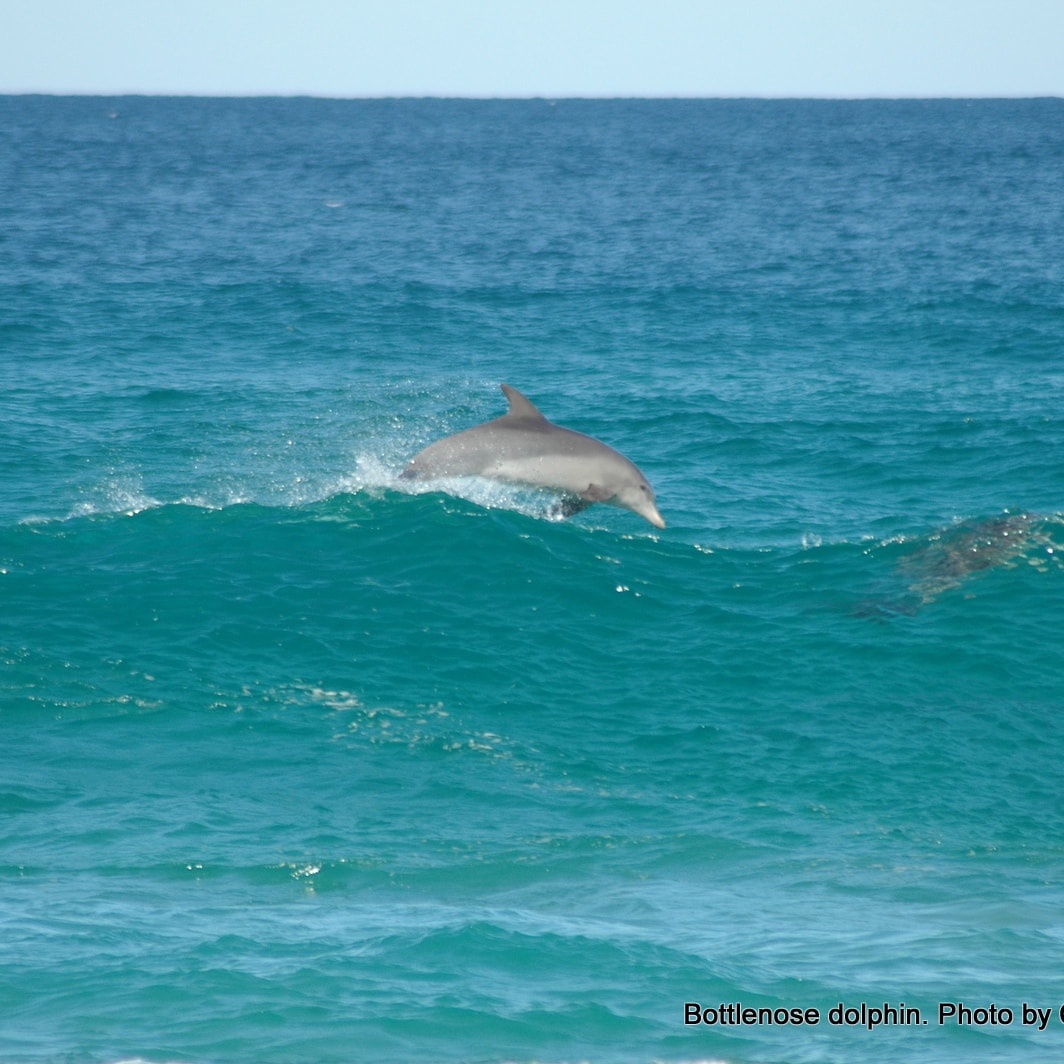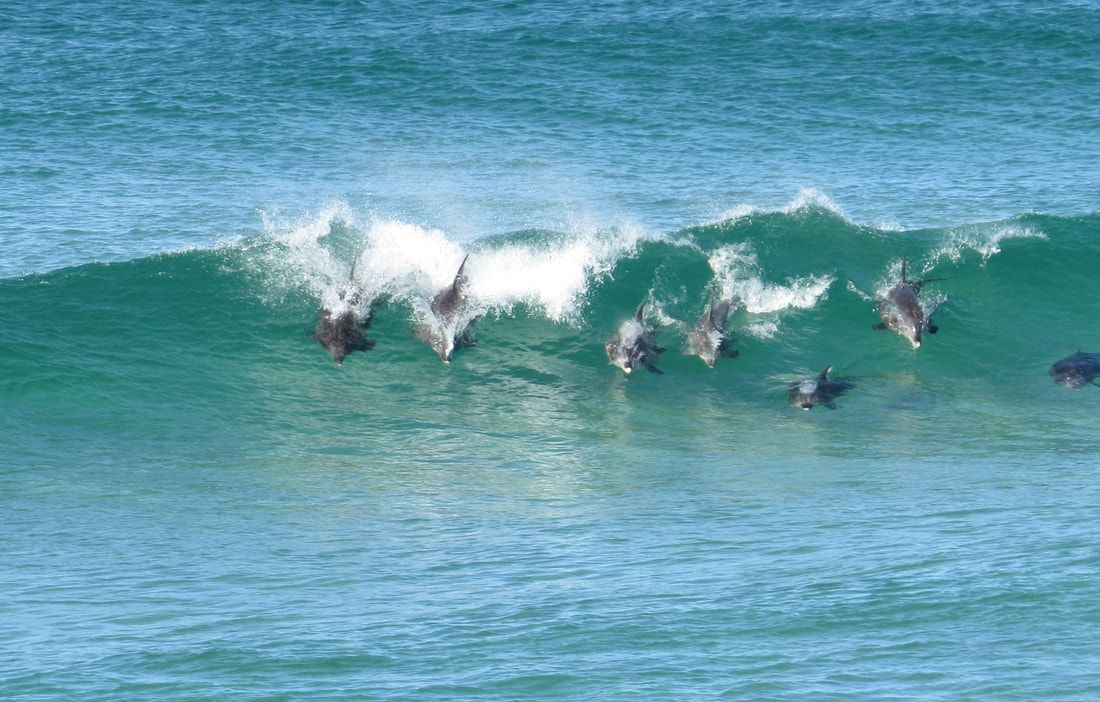Dolphins make the Myall coast a very special place.
There are few sights more glorious than a pod of dolphins surfing the breakers at Bennetts Beach or a mother and calf cruising the Myall River beneath the Singing Bridge.
It is rare not to see them somewhere in the river, ocean or port, whether one is strolling along the Myall, crossing the Singing Bridge or walking on our beaches.
There are more than 100 dolphins in the Port Stephens area, though – like humans – the numbers change as visiting dolphins come and go.
In 2019, 96 Volunteers manned 66 sites for the annual Port Stevens Dolphin Census, which is the longest running community dolphin count in Australia.
Myall Koala and Environment Group volunteers took up -pre-determined observation posts on Bennetts Beach, the Myall River, Winda Woppa, Pindimar and Jimmys Beach. The 2019 census reported 103 dolphins were spotted in one hour on a wet and windy winter’s day.
If you are interested to learn more and register for the next dolphin count, contact marineparksassociation.org.au
Some interesting facts about dolphins
There are more than 100 dolphins in the Port Stephens area, though – like humans – the numbers change as visiting dolphins come and go.
In 2019, 96 Volunteers manned 66 sites for the annual Port Stevens Dolphin Census, which is the longest running community dolphin count in Australia.
Myall Koala and Environment Group volunteers took up -pre-determined observation posts on Bennetts Beach, the Myall River, Winda Woppa, Pindimar and Jimmys Beach. The 2019 census reported 103 dolphins were spotted in one hour on a wet and windy winter’s day.
If you are interested to learn more and register for the next dolphin count, contact marineparksassociation.org.au
Some interesting facts about dolphins
|
There are more than 40 species of dolphins in the world, the most common being the bottlenose dolphin. Dolphins can dive to 46 metres though they have been known to dive to an astonishing 300 meters using their unique lung structure. They swim fast, from five to eleven kms/h, though they can reach up to 32 kms/h. Their average lifespan is about 17 years and some may live up to 50 years. The majority of them live in saltwater, while many can survive well in freshwater. The smallest dolphin is 1-2 metres long and the largest is three metres long. Killer whales are the largest of the dolphin family, reaching a length of nine metres. Dolphins weigh from 180kg to 230kg and will eat from 11kg to 23kg of fish every day. Dolphins need to come to the surface to breathe. Unlike land mammals that breathe and eat through their mouths, dolphins have separate holes for each task. They eat through their mouths and breathe through their blowholes, preventing them from sucking up water into their lungs when eating, reducing the risk of drowning. Dolphins are not migratory but will move to places where they have enough food, and the climatic conditions are suitable to their body temperatures. They are highly intelligent with brains similar to humans. According to Lori Marino, an expert on cetacean neuroanatomy at Emory University in Atlanta, they may be Earth's second smartest creature next to humans. |
Scientists have proved that dolphins can recognize themselves in a mirror and give themselves names. They develop their own individual whistles, and they recognize theirs and other dolphins’ names. They are social animals, living in groups that hunt and play together. Large pods of dolphins, called ‘superpods’ can be made up of 1,000 dolphins or more. As mammals, dolphins give live births, similar to humans – except the calf is born tail first. Depending on the species, dolphin gestation takes anytime between nine and 17 months. After giving birth, dolphins are very maternal. The mother helps the calf to the surface for its first breath, and they have been seen nestling and cuddling their young. Baby bottlenose dolphins are called "calves." Male dolphins are called "bulls," females are called "cows," and a group is a "pod." Depending on the species, dolphin calves are nursed for up to two years, staying with its mother for three to eight years. Dolphins have no sense of smell, but they have acute eyesight both in and out of the water. They hear frequencies 10 times the upper limit of humans, and they use echolocation to locate food and other objects in the ocean. In echolocating, dolphins produce a sound like "clicks." These "clicks" are reflected from objects of interest, providing information to the dolphin. Dolphins have few natural enemies, though humans are their main threat. Polluted habitats being caught as by catch in commercial fisheries,, and targeted hunting are the main threats that face dolphins worldwide. Adrienne Ingram Myall Koala and Environment Group October 2021
Photos by Christian Patteson and Barbara Lyle Good sites for more information include: environment.nsw.gov.au National Geographic, Whale and Dolphin Conservation, Aquaworld. |




